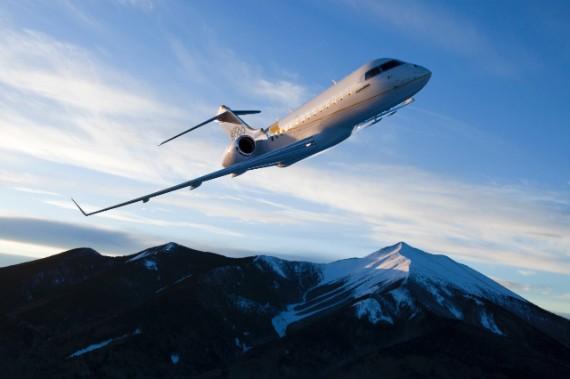
As Bombardier hints at more aviation selloffs, some analysts and consultants have been speculating who might be interested if the Canadian manufacturer decides to cut ties with its business aircraft division.
The list of potential buyers is small, however, and the business jet market is not a seller’s market, said Brian Foley, a consultant with Brian Foley Associates.
Bombardier, now in the process of exiting its commercial aviation sector, surprised investors Jan. 16 saying it was “reassessing future participation” in the Airbus A220 partnership and was looking to significantly lower its debt levels, now at $9 billion.
“We are actively pursuing alternatives that would allow us to accelerate our debt paydown,” Bombardier CEO and President Alain Bellemare said at the time.
Within hours, analysts were speculating that Bombardier could be looking at the sale of one of its two remaining divisions—business aviation or transportation.
Once the Airbus A220 program is gone from Bombardier, all that remains of its aviation is its business jet division, which could conceivably stand on its own, said Brian Foley, a consultant with Brian Foley Associates. “Bombardier could always decide to cut ties with that, too.”
However, with worldwide business jet deliveries averaging about 700 a year, it is not a seller’s market, Foley said.
“The market hasn’t been growing and is hampered by having 40 models of business jets competing for those finite sales,” he said.
Gulfstream Aerospace would have “little interest” since its largest and most profitable jets compete with Bombardier’s Global line of aircraft, Foley said. Dassault Falcon Jet also competes in the long-range, large-cabin segment.
Bombardier’s midsize Challenger line and intercontinental Global series would fill a “gaping hole” in Embraer’s business jet lineup, Foley said. But Embraer is working on a partnership with Boeing.
“Even if this somehow quickly came to fruition, Boeing is no longer the cash machine it once was due to the 737 MAX fiasco, a situation which would likely dampen any appetite to fund a Bombardier business jet purchase,” he said. “Embraer would have much difficulty swinging it on its own and would still need financially battered Boeing’s buy-in.”
Textron Aviation would be a logical fit, however, Foley said. Its product line centers around the light and medium jet categories. Its program to develop a larger jet, the Citation Hemisphere, was paused in 2019 from ongoing issues with its engine supplier. Pausing the program is a “seemingly more polite term to suppliers than ‘canceled,’” Foley said.
There would be some product overlap with the Learjet and the Challenger 350 would compete with the Citation Longitude.
However, “if Textron had the luxury of cherry-picking, Bombardier’s top-of-the-line Global series would provide a complete family of aircraft from entry-level to luxo-barge without cannibalization,” he said.
That said, if the acquisition of Hawker Beechcraft in 2014 is a teacher of history, Textron “prefers to wait until an acquisition target is distressed and has already jettisoned debt through reorganization,” Foley said. “Textron financials haven’t exactly been lighting the world on fire, which could hamper their inclination to execute.”
A potential combination in the business jet market would allow Textron Aviation to expand into heavy jets with the Challenger 650 and Globals, said Jefferies analyst Sheila Kahyaoglu in a note to investors.
“On our estimates, (Textron) could deliver 204 business jets in 2019 with (Bombardier) delivering 142 units in 2019,” Kahyaoglu wrote. “Combined this would account for ~55% share of the market.”
Textron Aviation and Bombardier officials both declined comment saying they do not comment on market speculation.
Non-strategic buyers could also be in a potential mix, Foley said. However, China passed on its chance to buy Bombardier’s C Series jetliner, now the A220, the CL-415 water bomber and Q400 turboprop, which makes a business jet buy questionable, he said.
Private equity is also a possibility, but only firms on the scale of a Carlyle Group or Blackstone “need apply,” Foley said.
In addition, “Airbus could decide to strategically expand beyond airliners and helicopters, while Bombardier’s Beudoin family could always hatch a buyout plan as well,” he said.
One analyst, however, believes as it explores its options, Bombardier would be more likely to pursue a sale of its rail business, which would likely gain greater interest from buyers.
“The aircraft business is the more Canadian business of the two, it is healthier, and the executive management team is rooted in aerospace,” Robert Springarn, an analyst with Credit Suisse said in a report to investors.
Should Bombardier decide to sell its business jet division, however, “the pool of potential buyers is relatively shallow,” Foley said. “While a few overlapping jet models might be discontinued following an acquisition, the market will still arguably be oversupplied. Even if a buyer came forward, it wouldn’t be until there was blood in the water.”
